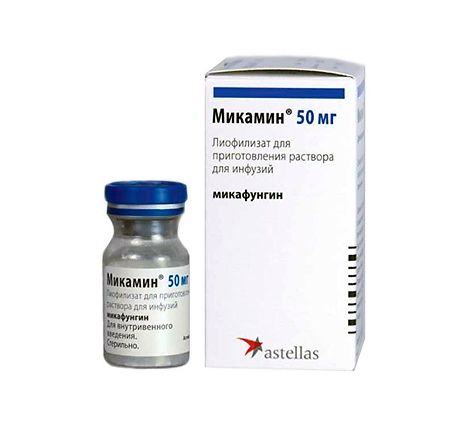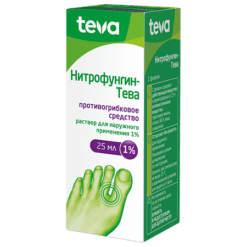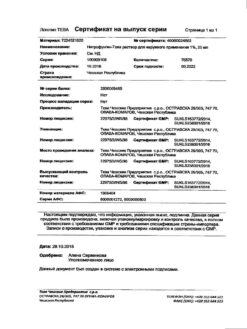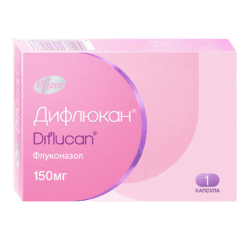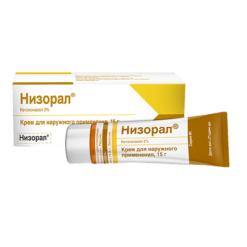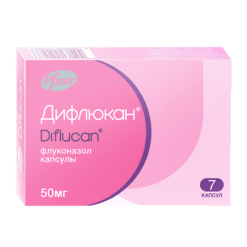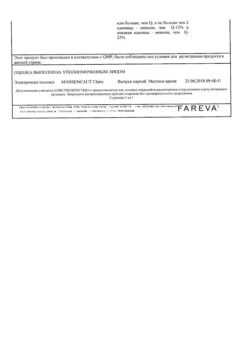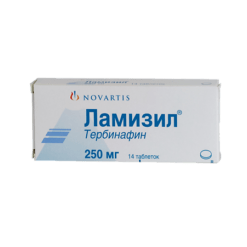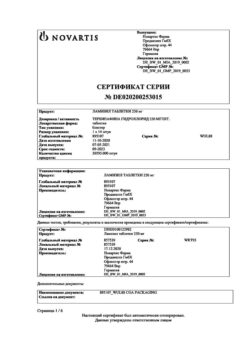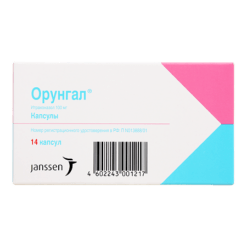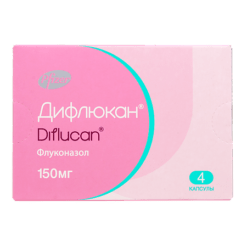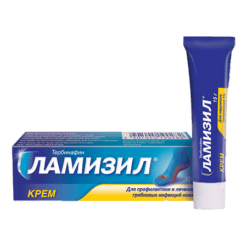No products in the cart.
Mykamin, lyophilizate 50 mg
€1.00
Out of stock
(E-mail when Stock is available)
Description
Mycamine is an antifungal.
Pharmacodynamics
Mycafungin non-competitively inhibits the synthesis of 1,3-β-D-glucan, an important component of the cell wall of fungi. 1,3-β-D-glucan is absent in mammalian cells. Micafungin has fungicidal activity against fungi of the genus Candida spp. and has a pronounced fungistatic effect against Aspergillus spp.
The spectrum of activity
Mycafungin in vitro is active against various types of fungi Candida spp, including Candida albicans, Candida glabrata, Candida tropicalis, Candida krusei, Candida kefyr, Candida parapsilosis, Candida guilliermondii, Candida lusitaniae, and Aspergillus spp, including Aspergillus fumigatus, Aspergillus flavus, Aspergillus niger, Aspergillus terreus, Aspergillus nidulans, Aspergillus versicolor, as well as dimorphic fungi (Histoplasma capsulatum, Blastomyces dermatitidis, Coccidioides immitis).The drug is inactive against Cryptococcus spp, Pseudallescheria spp., Scedosporium spp., Fusarium spp., Trichosporon spp., Zygomycetes spp. The probability of developing secondary resistance to the drug is very low.
Pharmacokinetics
The drug is administered by IV. In the daily dose range of 12.5-200 mg and 3-8 mg/kg, mycafungin is characterized by linear pharmacokinetics. There are no data on systemic cumulation of the drug upon repeated administration; Css is established within 4-5 days of administration.
Distribution
The concentration of mycafungin decreases biexponentially after IV administration. Mycafungin is rapidly distributed in tissues. In systemic blood flow, mycafungin actively binds to plasma proteins (>99%), mainly to albumin. Binding to albumin remains stable in the concentration range of 10-100 µg/ml. Vss is 18-19 liters.
Metabolism
Mycafungin circulates in the systemic bloodstream predominantly unchanged. Mycafungin has been shown to be metabolized to form several compounds; of these, M1 (catechol form), M2 (methoxy derivative of M1) and M5 (formed by hydroxylation of the side chain) mycafungin derivatives are determined in small amounts in the systemic bloodstream. Metabolites do not have a significant effect on the effectiveness of mycafungin.
While in vitro mycafungin can be metabolized by CYP3A isoenzymes, hydroxylation with the participation of CYP3A isoenzymes is not the main route of metabolism of the drug in vivo.
Elimination and excretion
T1/2 is 10-17 h, unchanged in the dose range up to 8 mg/kg after single and repeated administrations of the drug. Total clearance in healthy volunteers and adult patients in both single and repeated administrations was 0.15-0.3 ml/min/kg and was independent of dose. Twenty-eight days after a single administration of 25 mg 14C-mycafungin to healthy volunteers, 11.6% of the radioactive label was detected in urine and 71% in feces, indicating predominantly nonrenal elimination of mycafungin. Metabolites M1 and M2 were detected in plasma at trace concentrations, and metabolite M5 was 6.5% of the parent compound.
Pharmacokinetics in various patient groups
Children. In children, the AUC is proportional to the dose of the drug in the range of 0.5-4 mg/kg. Clearance depends on age: average clearance values in young children (2-11 years old) are about 1.3 times higher than in older children (12-17 years old) and adults. Average clearance in premature infants (about 26 weeks) is about 5 times greater than in adults.
Elderly patients. When 50 mg of mycafungin was infused for 1 h, pharmacokinetic parameters in elderly persons (66-78 years) were not significantly different from those in younger persons (20-24 years).
Patients with impaired liver function. In a study involving 8 patients with moderate hepatic dysfunction (Child-Pugh index 7-9), the pharmacokinetics of mycafungin were not significantly different from those of 8 healthy volunteers. In a study involving 8 patients with severe hepatic impairment (Child-Pugh index 10-12), there were decreased plasma concentrations of mycafungin and increased plasma concentrations of the hydroxide metabolite (M5) compared to data obtained in 8 healthy volunteers.
Patients with renal dysfunction. Severe renal dysfunction (glomerular filtration
Gender/race. Gender and race had no significant effect on the pharmacokinetic parameters of Micafungin.
Indications
Indications
Adults, including. the elderly, and adolescents â¥16 years of age:
Children, including newborns.
Active ingredient
Active ingredient
Composition
Composition
Active ingredient:
Mycafungin (in the form of mycafungin sodium) 50 mg;
Ancillary substances:
Lactose monohydrate, 200 mg;
Citric acid anhydrous, q.s. to pH 5-7;
sodium hydroxide – q.s. to pH 5-7
How to take, the dosage
How to take, the dosage
For treatment of esophageal candidiasis – 150 mg/day by IV infusion.
The duration of use is determined individually.
Interaction
Interaction
Micafungin has a low potential for interactions with drugs that are metabolized with participation of CYP3A enzyme.
Micampin® should not be mixed or administered to patients concomitantly with other pharmaceutical products, except for 0.9% sodium chloride solution and 5% dextrose solution.
When concomitant use of mycafungin with drugs such as mycophenolate mofetil, cyclosporine, tacrolimus, prednisolone, sirolimus, nifedipine, fluconazole, ritonavir, rifampicin, itraconazole, voriconazole and amphotericin B, no dosing adjustment of mycafungin is required.
The AUC of itraconazole, sirolimus and nifedipine increased slightly by 22, 21 and 18%, respectively, when using mycafungin. Co-administration of mycafungin and amphotericin B deoxycholate was associated with a 30% increase in amphotericin B deoxycholate exposure. Because this may be clinically relevant, this coadministration should be used only if the benefit clearly outweighs the risk, with careful monitoring of the toxicity of amphotericin B deoxycholate.
Patients receiving sirolimus, nifedipine or itraconazole in combination with Mycamine® should be monitored to detect toxic effects of sirolimus, nifedipine or itraconazole and, if necessary, reduce the dose of these drugs.
Special Instructions
Special Instructions
Anaphylactic/anaphylactoid reactions, including shock, may occur during administration of Mycafungin. If they occur, it is necessary to stop the infusion of mycafungin and prescribe the necessary treatment.
Exfoliative skin reactions such as Stevens-Johnson syndrome and toxic epidermal necrolysis may occur when using mycafungin. If patients develop a rash, they should be closely monitored and mycafungin should be discontinued if it progresses.
In rare cases, hemolysis, including acute intravascular hemolysis, and hemolytic anemia have been observed in patients during treatment with mycafungin.
If clinical or laboratory signs of hemolysis occur, ensure careful monitoring of the patient’s condition and evaluate the risk/benefit ratio of continued treatment.
When using mycafungin, changes in renal function have been noted, including the development of renal failure, so close monitoring of renal function should be ensured during treatment.
Mycafungin use may be accompanied by significant worsening of liver function (increase of ALT, AST or total bilirubin activity more than 3 times exceeding BBN) both in healthy volunteers and in patients. In individual cases, more severe liver dysfunction (hepatitis or hepatic failure with fatal outcome) was noted. The risk of hepatotoxicity is increased in patients under 2 years of age. In rats, when using the drug for >3 months, the appearance of local foci of altered hepatocytes and the formation of hepatic cell tumors were observed. The significance of this fact for the clinical use of the drug in patients has not been established. Careful monitoring of liver function should be ensured during treatment with Micafungin. In order to minimize the risk of adaptive regeneration and, as a consequence, possible subsequent formation of liver tumors, with significant or persistent increase in ALT, AST activity, cancellation of the drug is recommended. Treatment with Micafungin should be performed carefully weighing the risk-benefit ratio, especially in patients with severe liver dysfunction or chronic liver diseases, which are pre-tumor states, such as severe liver fibrosis, cirrhosis, viral hepatitis, liver diseases in newborns or congenital enzymopathies, as well as in case of concurrent use of drugs with hepatotoxic and/or genotoxic effect.
The frequency of some adverse reactions was higher in children than in adult patients. In children under 1 year of age, there was approximately twice as much increase in ALT, AST, and ALP activity as in children over 1 year of age. The most likely reason for these differences was the different baseline status of children under 1 year of age in the clinical trials compared to older children and adult patients. At the time of inclusion in the study, the proportion of patients with neutropenia, post allogeneic bone marrow transplantation, and malignant hematologic masses among children (40.2, 29.4, and 29.1%, respectively) was several times higher than among adults (7.3, 13.4, and 8.7%, respectively).
The effect on the ability to drive and operate machinery. No studies have been conducted to evaluate the effect of mycafungin on the ability to drive and operate mechanisms. However, there may be adverse reactions that may adversely affect the ability to drive and operate machinery.
Contraindications
Contraindications
Hypersensitivity to the active substance, other echinocandins or any of the excipients or their intolerance (galactose intolerance, lactase deficiency, glucose-galactose malabsorption).
With caution: Severe liver function disorders; chronic liver disease (liver fibrosis, cirrhosis, viral hepatitis, neonatal liver disease or congenital enzyme defects); concomitant hepatotoxic and/or genotoxic therapy; childhood age (especially under 1 year); renal failure; simultaneous use with sirolimus, nifedipine, itraconazole and amphotericin B.
Side effects
Side effects
Blood and lymphatic system: frequent – leukopenia, neutropenia, anemia; infrequent – pancytopenia, thrombocytopenia, eosinophilia, hypoalbuminemia; rare – hemolytic anemia, hemolysis; frequency unknown – disseminated intravascular coagulation.
Immune system disorders: infrequent anaphylactic/anaphylactoid reactions, hypersensitivity reactions.
Metabolism and nutrition: frequently – hypokalemia, hypomagnesemia, hypocalcemia; infrequently – hyponatremia, hyperkalemia, hypophosphatemia, anorexia.
Mental disorders: infrequent – insomnia, anxiety, disturbance of consciousness.
Nervous system disorders: frequently – headache; infrequently – somnolence, tremor, dizziness, perversion of taste, hyperhidrosis.
Heart: infrequent – tachycardia, palpitations, bradycardia.
Vascular disorders: frequent – phlebitis (mainly in HIV-infected patients with peripheral catheters); infrequent – arterial hypotension, arterial hypertension, hyperemia; frequency unknown – shock.
Respiratory system, thoracic and mediastinal organs: infrequent – dyspnea.
Gastrointestinal system disorders: frequently – nausea, vomiting, diarrhea, abdominal pain; rarely – dyspepsia, constipation.
Hepatic and biliary tract disorders: frequently – increased ALT, AST, bilirubin activity in serum (including hyperbilirubinemia), changes of liver function tests; infrequent – liver failure, increased GGTP activity, jaundice, cholestasis, hepatomegaly, hepatitis; frequency is unknown – hepatocellular lesions, including lethal.including cases of lethal outcome.
Skin and subcutaneous tissue: frequently – rash; infrequently – urticaria, pruritus, erythema; frequency unknown – toxic skin rash, erythema multiforme, Stevens-Johnson syndrome, toxic epidermal necrolysis.
Recreational and urinary tract disorders: infrequent – increased serum creatinine and urea concentrations, progression of renal failure; frequency unknown – renal dysfunction, acute renal failure.
General disorders and disorders at the site of injection: frequently – hyperthermia, chills; infrequently – thrombus formation, pain at the injection site, inflammation at the site of infusion, peripheral edema.
Laboratory and instrumental data: infrequent – increase of serum lactate dehydrogenase activity.
Pediatric patients
The frequency of some adverse reactions listed below was higher in children than in adults. In addition, children under 1 year of age were twice as likely to show increased ALT, AST, and ALP activity as older children.
Blood and lymphatic system disorders: often – thrombocytopenia.
Cardiac disorders: often – tachycardia.
Vascular: often – arterial hypertension, arterial hypotension.
Hepatic and biliary tract disorders: often – hyperbilirubinemia, hepatomegaly.
Key kidneys and urinary tract: often – acute renal failure, increased serum urea concentration.
Pregnancy use
Pregnancy use
There is no clinical experience with the use of Micafungin in pregnant women. Therefore, Mikamine should be used during pregnancy only after careful risk/benefit assessment.
It is not known whether mycafungin penetrates the breast milk. The decision to continue/terminate breastfeeding or to continue/terminate treatment with Mycamine should be made taking into account the benefit of breastfeeding for the baby and the benefit of Mycamine treatment for the mother.
Additional information
| Shelf life | 3 years |
|---|---|
| Conditions of storage | In a light-protected place, at a temperature not exceeding 25 °C, in the original package |
| Manufacturer | Astellas Pharma Tech Co. Ltd., Japan |
| Medication form | lyophilizate |
| Brand | Astellas Pharma Tech Co. Ltd. |
Related products
Buy Mykamin, lyophilizate 50 mg with delivery to USA, UK, Europe and over 120 other countries.

